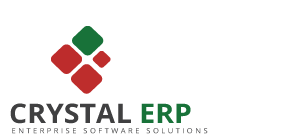Last week the scale of Britain’s IT scrapheap was revealed in research by Crucial Technology, stating that Britain is throwing away 5,528 tonnes of PCs and laptops every year. The question is how many of these devices had reached the end of their usable life? How many could have been saved? Were they disposed of in a sustainable way that also protected personal or corporate data? And finally, how much residual value has been lost on this scrapheap?
Whether we are at work or at play, we all want access to the latest hardware devices and the accessibly and affordability of new technology, along with the rate of innovation in the market has dramatically shortened lifespans.
However, with corporate IT budgets stretched tighter than ever, IT departments need to become smarter about how they procure hardware, extend lifecycles and when the time comes, extract the maximum residual value, in a secure environment, that lowers their overall total cost of ownership.
Essentially, IT departments need to be able to adopt habits to the ones you and I followed when we purchased our last mobile phone – let me explain!
Chances are that as you approached the end of your phone contract you started to look around at what handsets are on the market, what features and functions you wanted, so when the time came you could make the right decision for your needs. You may have decided to stick with your existing handset as it still does the job, or you may have chosen to upgrade.
If you upgraded, what did you do with the old device? Sell it, give it to a friend or relative, or use one of the environmentally friendly recycling services to get cash-back? You wouldn’t dream of throwing it out, after all it is a perfectly good handset that has value, it just doesn’t meet your requirements anymore.
And, before it leaves your hands you make very sure that all of your personal data is wiped clean from the device. The very same thinking can be applied to how an organisation manages its IT hardware assets, so where are the challenges organisations face when taking this approach?
One problem is scale. It is easy for you or I to understand what technology we have, want, need to replace and when. However, when you are looking after the IT requirements of many hundreds or indeed thousands of employees across multiple, departments, sites and even countries, the challenge to manage this process is far more complex, but it is achievable and the rewards for doing so can be substantial.
The first step is to get a tight grip on what you have. This sounds obvious but you can’t manage what you can’t measure! Creating an inventory of what assets you have and where they reside is crucial. From here you can then begin to look at what departments are over or under provisioned, and having this overview will help to overcome the disconnect that often exists in large organisations.
Imagine this scenario – department A has just made 50 people redundant, resulting in 50 laptops that are less than one year old gathering dust on empty desks. Meanwhile, department B is on a recruitment drive and is employing 20 new members, and as part of the on-boarding process HR has notified IT to procure 20 brand new laptops. It may seem obvious to reallocate 20 of the existing laptops to the new starters, yet without an up-to-date overview of what is residing where (on or off the network) the path of least resistance is to procure.
Similarly, the accounts team are not likely to require the same processing power as those in the marketing department, but if the Credit Controller’s PC fails beyond repair and the Marketing Director’s PC is no longer powerful enough, then it makes perfect sense for the former to inherit the device of the latter, rather than paying for two new machines.
Inevitably there does come a time when IT assets are no longer fit for purpose, but the key is to have a handle on when this time is likely to come, and to be well prepared. Right now many organisations will be thinking about what to do in the face of Microsoft ending support for Windows XP (according to Netmarketshare 39% of all desktops are running this operating system), whether it is to invest in new devices or upgrade existing equipment.
For devices that do need to go on the IT scrapheap is important that this is done in a safe, secure, sustainable and ethical way, in line with your corporate social responsibility guidelines and in compliance with regulation, to not only avoid landfill, but also to help the organisation recoup the residual value from the components which can in turn be offset against new hardware investment.
Crucially, whether devices are being reallocated internally, or are exiting the business they need to be thoroughly cleaned to ensure there is no data leakage, that could compromise, harm and result in costly repercussions for the organisations brand, competitive advantage, or its customers confidentially.
By better managing IT assets organisations can play a significant part in lightening the load being dumped on the scrapheap and in doing so make their hardware investments work harder.
Robin Gue is Chairman of The ITAD Works.


Leave a Reply
You must be logged in to post a comment.